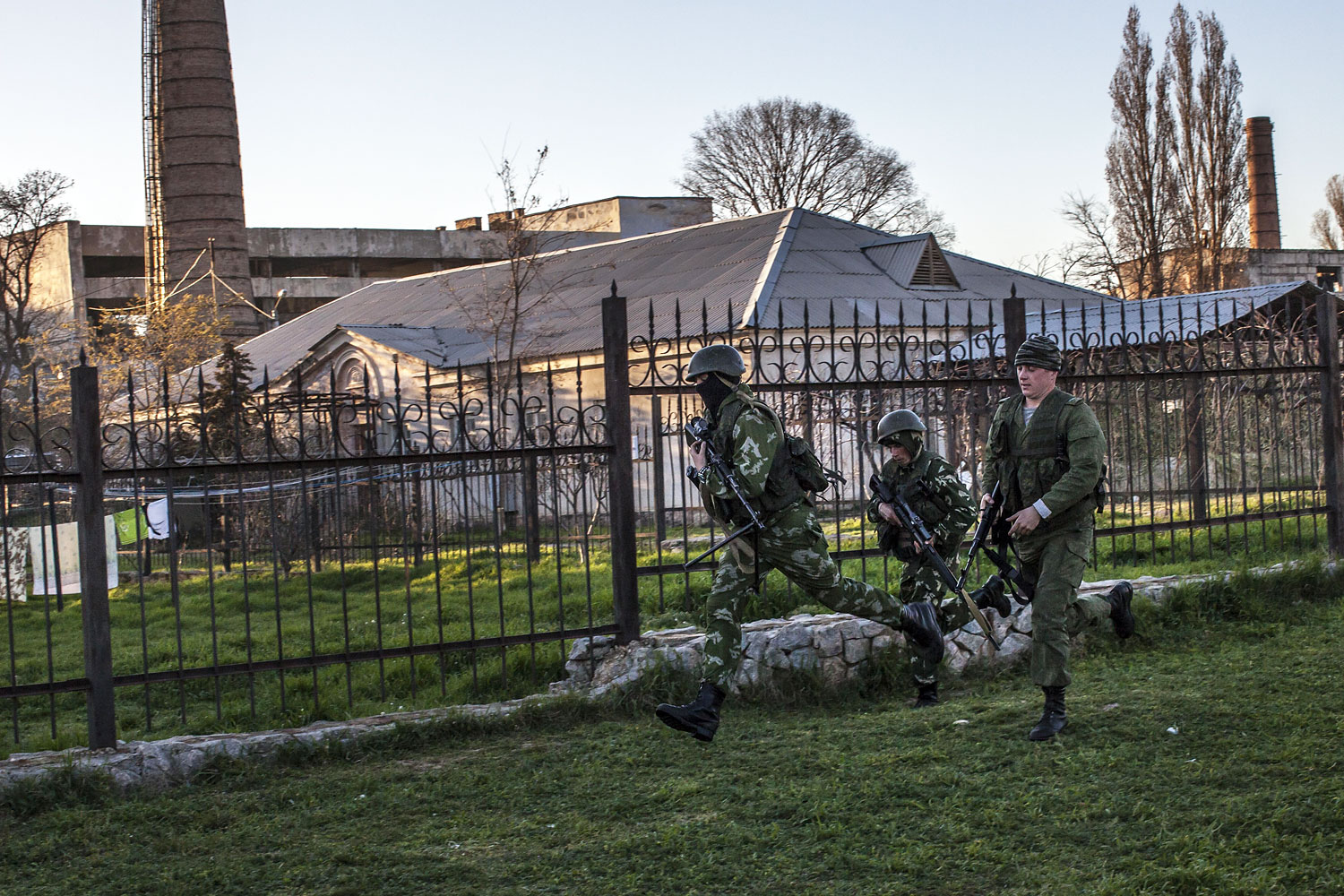
Despite Russian reassurances that Moscow’s troop buildup along Ukraine’s eastern frontier is for a military exercise, its growing scale is making U.S. officials nervous about its ultimate aim.
President Barack Obama on Friday urged Russia to stop “intimidating” Ukraine and to pull its troops back to “de-escalate the situation.” He told CBS that the troop buildup may “be an effort to intimidate Ukraine, or it may be that [Russia has] additional plans.”
Pentagon officials say they believe there could be close to 50,000 Russian troops bordering the former Soviet republic and inside Crimea, recently seized and annexed by Moscow. That estimate is double earlier assessments, and means Russian President Vladimir Putin could order a lighting strike into Ukrainian territory with the forces already in place. The higher troop count was first reported by the Wall Street Journal.
“We continue to see the Russian military reinforce units on their side of the border with Ukraine to the south and to the east of Ukraine,” Rear Admiral John Kirby, the Pentagon spokesman, said Thursday. “They continue to reinforce and it continues to be unclear exactly what the intent there is.”
State Department spokeswoman Marie Harf played down the notion that there are as many as 100,000 Russian troops now bordering Ukraine, as Olexander Motsyk, the Ukrainian ambassador to the U.S., said Thursday on Capitol Hill. “I hadn’t actually seen the hundred-thousand number,” Harf said. “There are huge numbers of Russian troops on the Ukrainian border. … We are concerned about Russia taking further escalatory steps with whatever number of tens of thousands of troops they have there, and have called on them not to do so.”
Washington got those assurances that the Russian troop buildup was only an exercise from Russian Defense Minister Sergei Shoigu a week ago. But no one in the U.S. government knows if Putin agrees—or if the Russian leader has changed his mind as the West has debated what level of economic and political sanctions might be imposed if Moscow takes an additional chunk of Ukraine beyond Crimea. “They made it clear that their intent was to do exercises and not to cross the border,” Kirby said. “Our expectation is they’re going to live up to that word.”
There is no plan to involve the U.S. military in what is happening in Ukraine, even if Russia takes more territory. Ukraine borders Russia, and Ukraine does not belong to NATO, where an attack on one member is deemed to be an attack on all.
“Should the Russians continue to move aggressively in that region and in the Ukraine, what does that mean—and NATO would have to respond, for example—what would that mean for the United States Army?” Rep. Tim Ryan, D-Ohio, asked the Army’s top officer Thursday.
“My responsibility is to make sure that the U.S. Army is prepared to respond as part of a joint force, as part of NATO,” General Ray Odierno, the Army chief of staff, responded. “So what I’m focused on is improving our readiness in combat, combat service support and combat aviation capabilities to make sure we’re ready to respond whether it’s from a humanitarian assistance aspect or any other aspect.”
How many of the 67,000 U.S. troops in Europe might be involved? “I simply don’t know,” Odierno said. “And I would just remind people that, actually, some of the soldiers that are assigned to Europe actually right now are in Afghanistan.”
Lawmakers suggested that the world is abandoning Ukraine. “It appears to me Ukraine was left defenseless over the last two decades,” said Rep. Marcy Kaptur, D-Ohio.
“Ukraine has stood with us both in Iraq and Afghanistan,” added Rep. Rodney Frelinghuysen, R-N.J. “We’re highly appreciative and recognize their sacrifice.”
The U.S. has made plain it is not rushing military aid of any kind to Ukraine, despite Kiev’s requests. Ukraine has sought lethal military aid—small arms and ammunition—but that is off the table. “The rations, the Meals Ready to Eat, they are on the way,” Kirby said. “We expect them to arrive in Ukraine probably by the weekend is the best estimate. They’re going over land.”
Obama stressed Thursday that economic and political sanctions would be the primary weapons the international community would be brandishing to curb Russian aggression against Ukraine. “I’ve been very clear in saying that we are going to do everything we can to support Ukraine and the Ukrainian people,” he said in Rome. “But I think that it’s also important for us not to promise and then not be able to deliver.”
More Must-Reads from TIME
- Why Trump’s Message Worked on Latino Men
- What Trump’s Win Could Mean for Housing
- The 100 Must-Read Books of 2024
- Sleep Doctors Share the 1 Tip That’s Changed Their Lives
- Column: Let’s Bring Back Romance
- What It’s Like to Have Long COVID As a Kid
- FX’s Say Nothing Is the Must-Watch Political Thriller of 2024
- Merle Bombardieri Is Helping People Make the Baby Decision
Contact us at letters@time.com